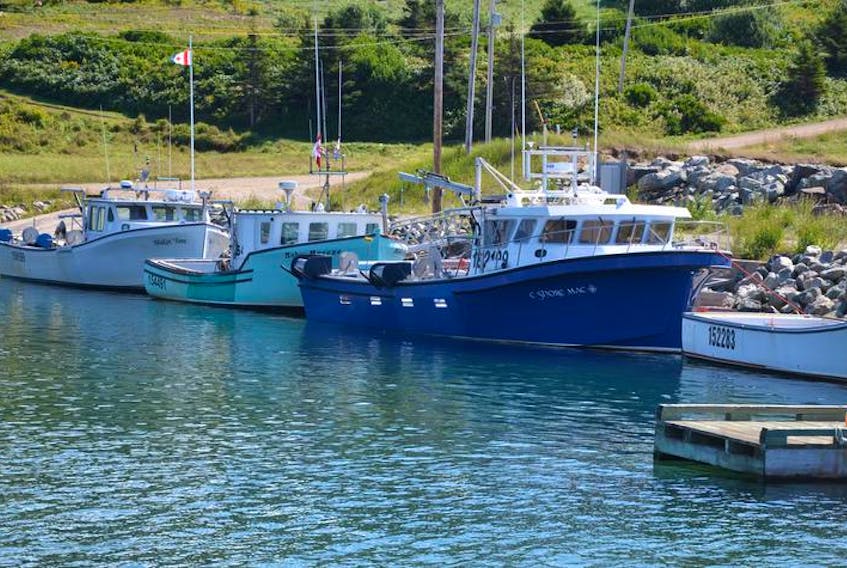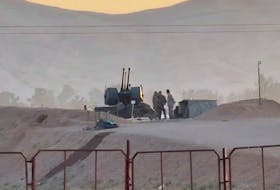Note: Sea levels are rising at a pace unparalleled in modern times and storms are becoming more intense as a result of global warming. This story is part of a weeklong series examining our rising oceans, the impact on our region and what government, scientists and others are doing to track change and mitigate damage.
Click here to read the series.
The lobster off western Cape Breton didn’t get the memo about thriving in colder water.
“They should have told the lobsters that this year,” said John Phillip Rankin, a fisherman from Mabou Coal Mines.
“By the first of July, it was warm and they started snapping but we were after putting our traps on the wharf. They start jumping when it gets warmer. They do all right in cold water. It was a decent season but it was cold-water trapping, you could tell. Last year, it was warm right through, a better season. The landings were quite a bit higher.”
The scientific theory goes that as sea level rises, as the water volume increases, it expands. With climate change, the sea water in Atlantic Canada is increasing in volume and temperature. A recent University of Washington study shows that the deepest waters of the Gulf of St. Lawrence and the Scotian Shelf are warming faster and losing more oxygen faster than almost anywhere else in the global oceans.
David Hebert, an oceanography professor at Dalhousie, said that the more shallow ocean water in the Scotian Shelf doesn’t rise as much because of warming.
“Five degrees change on the shelf causes only 10 centimetres of height difference because the shelf is so shallow,” Hebert said of shelf waters off Nova Scotia that reach depths of 200 metres.
“Even though you warm up the water a lot, there is not a lot of volume. The deep (Atlantic) ocean, where you have 6,000 metres of depth, a smaller (temperature) change makes a bigger height difference. That’s what global warming does and that’s a long-term trend.”
Boris Worm, a marine biologist at Dalhousie, said fishermen are already aware that the distribution of major stocks like lobster, cod and hake are changing often.
“There are new species coming up from New England that we have not regularly had in our water,” Worm said. “For example, (the predatory) black sea bass is one that people are concerned about. Some fishermen are concerned that they might be eating lobster, for example.”
Worm said lobster and cod like cold water to a certain extent.
“They don’t like the cold Arctic water. Lobster thrive here because the water temperature here is just right for them now. That is changing. At some point we are moving into warmer water and that’s not good for cold water species. But then we get some of these warm water species that might give new opportunities. The industry is changing.”
Rankin said striped bass have become prevalent in his area.
Climate change has contributed to a lobster fishing boom in the state of Maine, southwest of Nova Scotia. There, scientists say the Gulf of Maine has warmed faster than 99 per cent of the world’s oceans for much of this century, driven by climate change and a combination of natural variations. By 2050, that warming could cut lobster numbers in the gulf by more than 60 per cent, the Gulf of Maine Research Institute says.

For Rankin and other Gulf of St. Lawrence fishermen in district 26b, the lobster season extends through May and June.
“I know they tend to be more active in the heat, like anything else,” Rankin said of lobster. “The water temperature is around (freezing) when we start fishing. They’re sitting there in hibernation all winter, looking for a bite to eat. You can tell when you pull the trap up, they are lying there like they are dead, but the last day, they were slipping and snapping and biting.
“Usually, you start to see that around the long weekend in May or a week later. “
Rankin said he has a surface water thermometer in his boat and the temperature can rise to 15 to 20 degrees Celsuis by season’s end.
“You’ll start to get molts in the traps,” Rankin said. “They want to come in when the water is warm and there is less tide and flip their spawn away so that it’s not roaming on strong tides that you get in deeper, colder water. The warmer water gives the eggs a better opportunity for development. Every other beast in the world knows that and they come in to scoop them up and eat them. “
Rankin said he hasn’t noticed drastic changes in surface water temperature during his nearly 35 years chasing a livelihood on the sea.
“I remember about 10 years ago seeing it about (24C) in the summertime but I don’t know if I have seen it that high in the last few years,” he said. “Normally, it hangs on to a pretty good temperature into October. Then it goes down to about (10C) there, when we are chasing tuna.”
Hebert said changes in climate exhibit normal variabilities.
“We go through these time periods and it is still open to exactly why,” Hebert said. “We had cold periods in the 1960s and 70s, we had warm periods in the 80s and 90s and now, (starting about 2010) we’re looking like we’re going to have warmer periods. There is a sort of a decade-to-decade variability, which is the biggest variability and that could actually affect where lobsters and fish go, based on temperature. It’s a long enough (time scale) that they can actually migrate.”
The lobster season in western Cape Breton depends on ice cover, Rankin said.
“If you have good ice cover, the water stays warmer. If you have less ice cover, the frost gets in the water and it stays colder longer.
“As the season goes on, the shallower water gets better for lobsters. The sun warms that quicker than the deep.”
Rankin said climate change, sea levels and water temperatures remain an imperfect science.
“Every 10,000 or 20,000 years, another ice age,” he said. “Everything melts, everything gets warm. Sea level rises. Then everything gets cold and everything freezes and the sea level drops. You don’t know what’s natural and what we did.”









